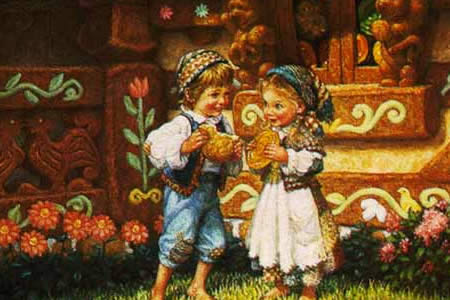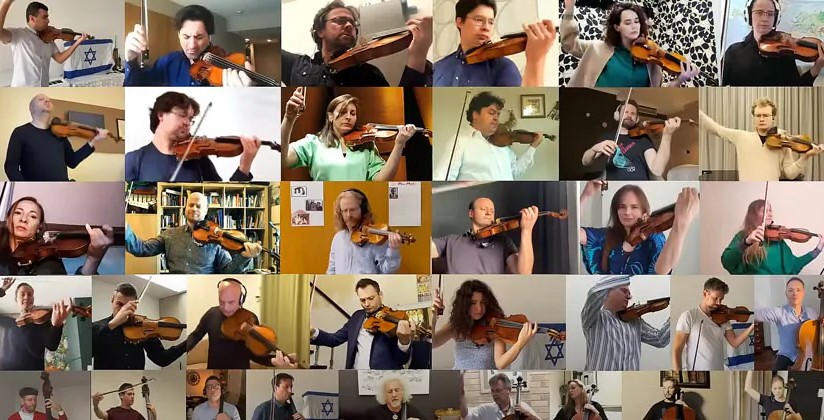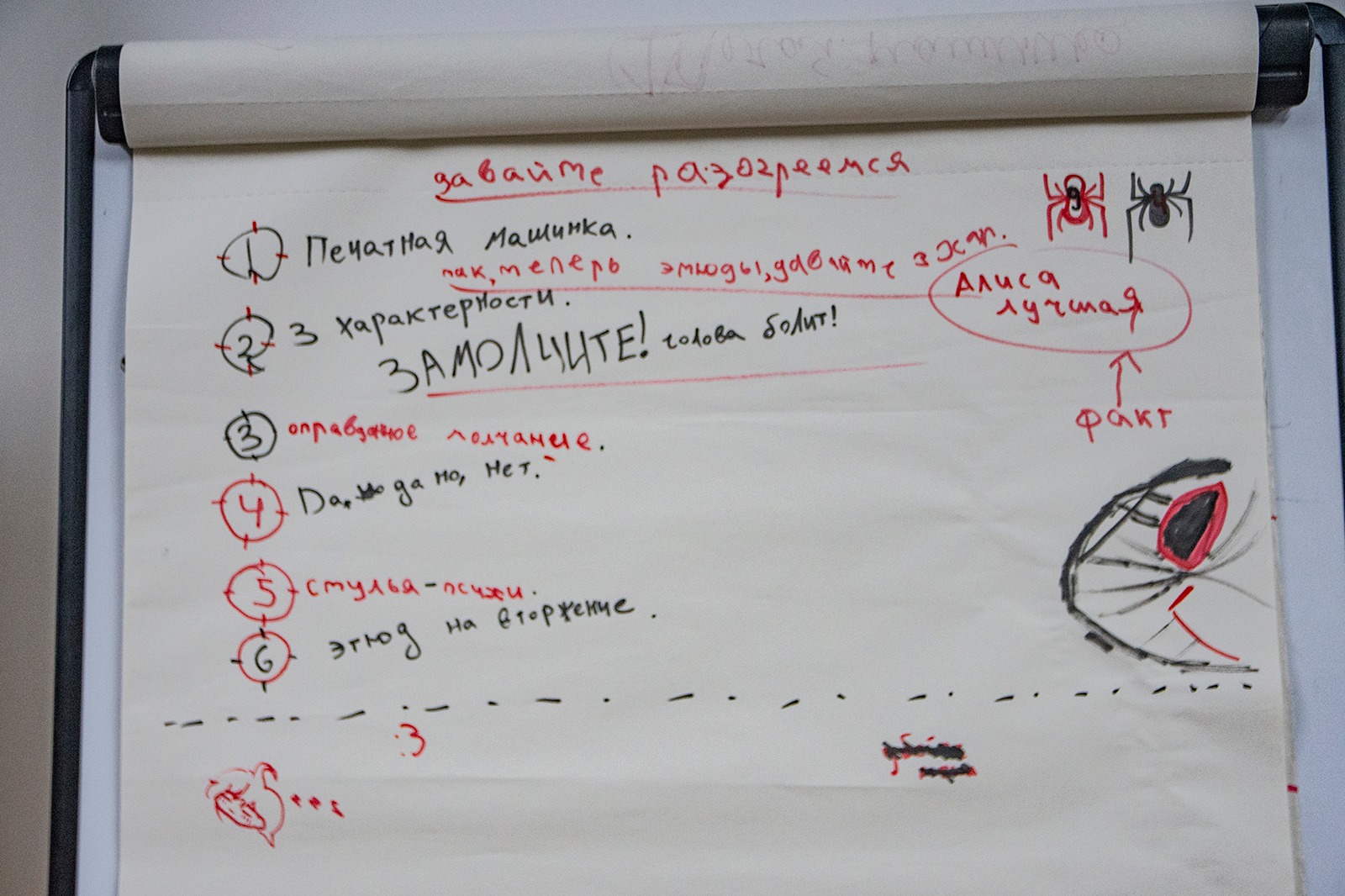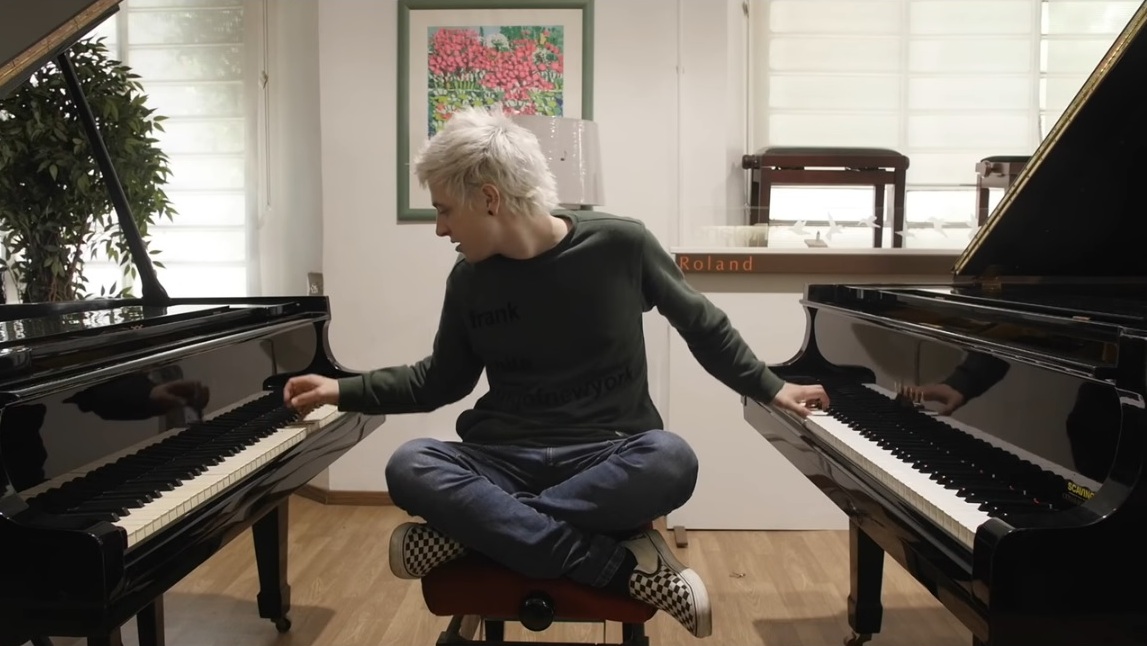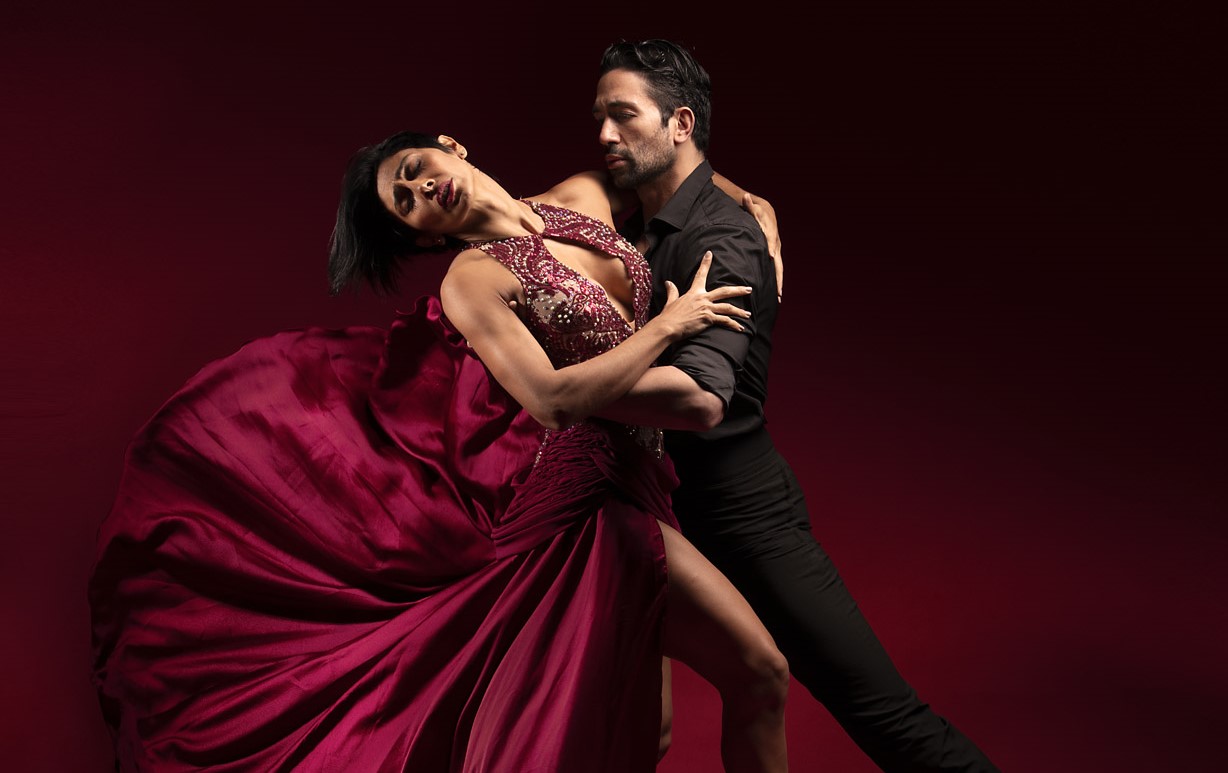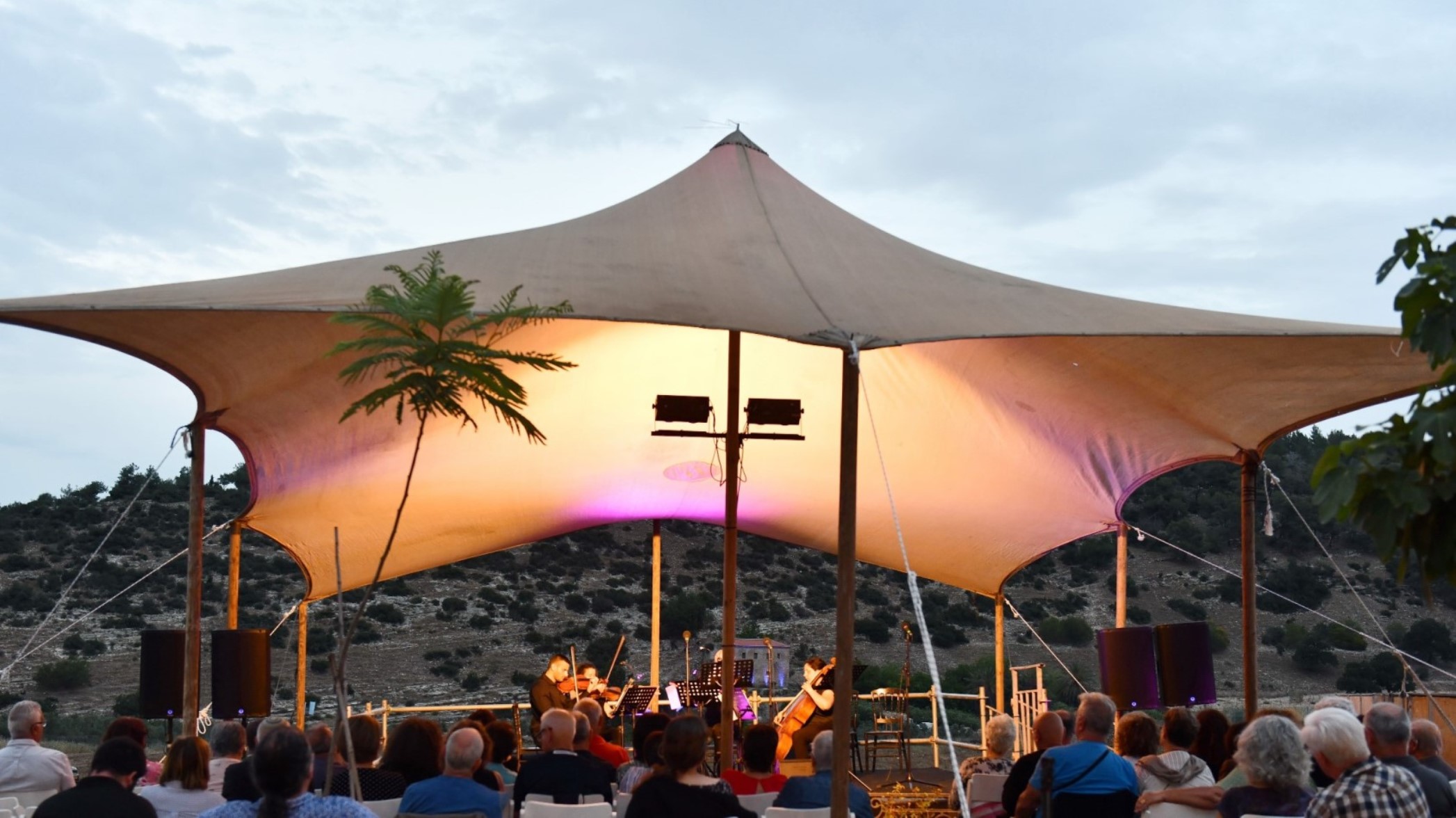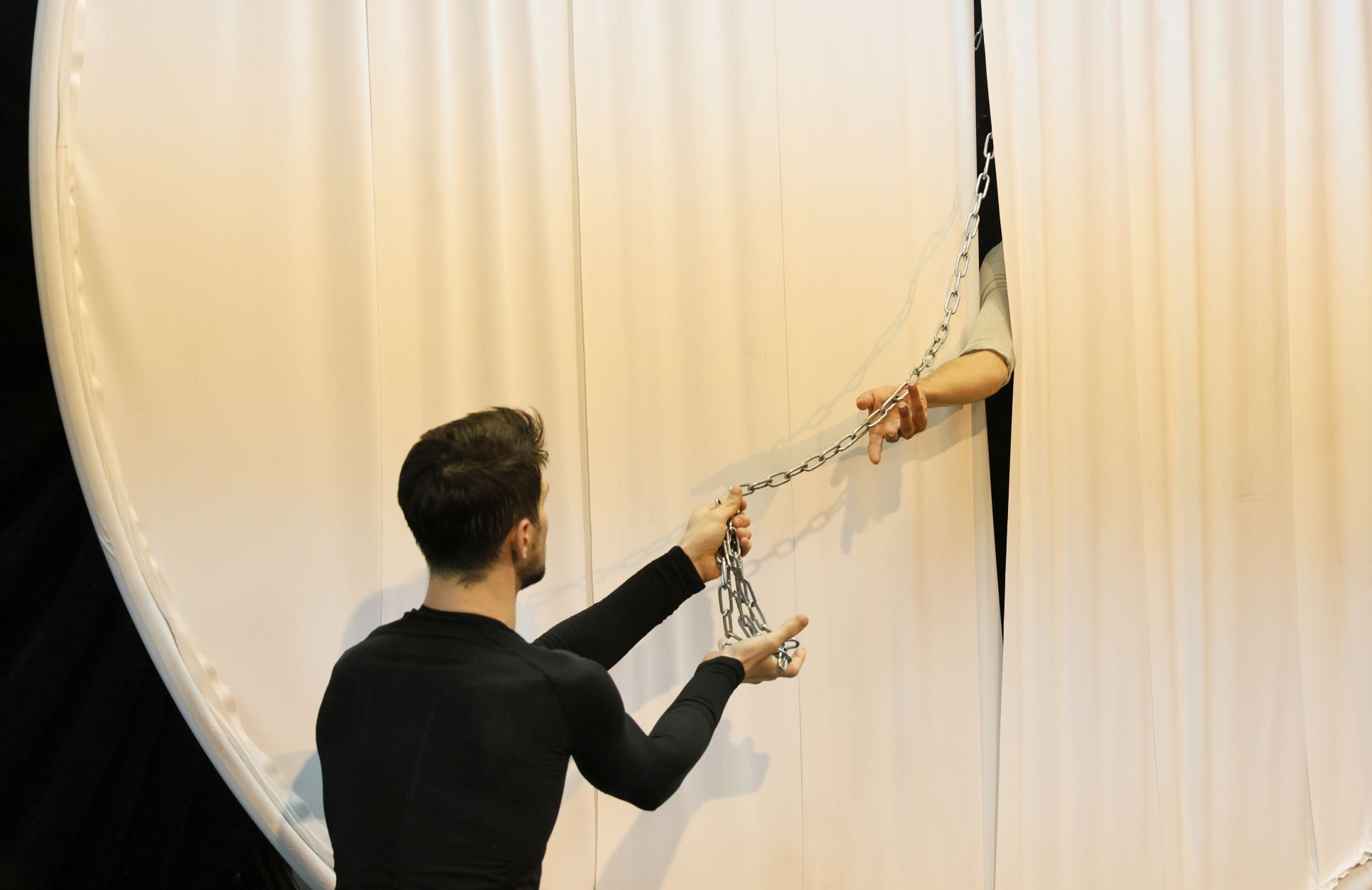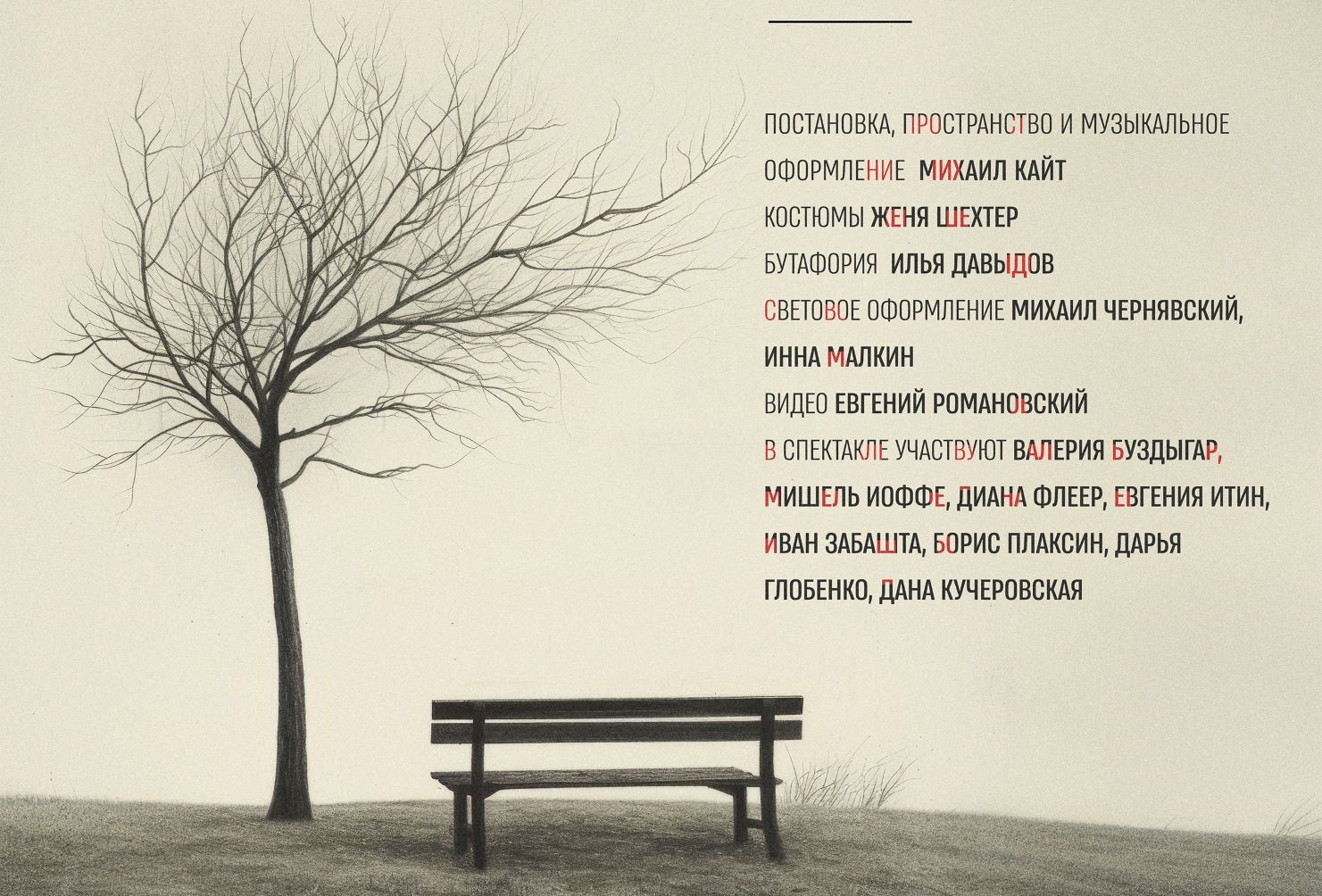«Паразиты» Пон Чжун Хо
Нечто столь же прекрасное, что и «Магазинные воришки», только с бо́льшим драйвом. Начинаешь совершенно иначе воспринимать философию бытия (не азиаты мы...) и улавливать запах бедности.
«Паразиты» – первый южнокорейский фильм, удостоенный «Золотой пальмовой ветви» Каннского фестиваля. Снял шедевр Пон Чжун Хо, в привычном для себя мультижанре, а именно в жанре «пончжунхо». Как всегда, цепляет.
«Синонимы» Надава Лапида
По словам режиссера, почти всё, что происходит в фильме с Йоавом, в том или ином виде случилось с ним самим, когда он после армии приехал в Париж. У Йоава (чей тезка, библейский Йоав был главнокомандующим царя Давида, взявшим Иерусалим) – посттравма и иллюзии, замешанные на мифе о герое Гекторе, защитнике Трои. Видно, таковым он себя и воображает, когда устраивается работать охранником в израильское посольство и когда учит французский в OFII. Но ведь научиться говорить на языке великих философов еще не значит расстаться с собственной идентичностью и стать французом. Сначала надо взять другую крепость – самого себя.
«Frantz» Франсуа Озона
В этой картине сходятся черное и белое (хотя невзначай, того и гляди, вдруг проглянет цветное исподнее), витальное и мортальное, французское и немецкое. Персонажи переходят с одного языка на другой и обратно, зрят природу в цвете от избытка чувств, мерещат невесть откуда воскресших юношей, играющих на скрипке, и вообще чувствуют себя неуютно на этом черно-белом свете. Французы ненавидят немцев, а немцы французов, ибо действие происходит аккурат после Первой мировой. Разрушенный войной комфортный мир сместил систему тоник и доминант, и Франсуа Озон поочередно запускает в наши (д)уши распеваемую народным хором «Марсельезу» и исполняемую оркестром Парижской оперы «Шехерезаду» Римского-Корсакова. На территории мучительного диссонанса, сдобренного не находящим разрешения тристан-аккордом, и обретаются герои фильма. Оттого распутать немецко-французскую головоломку зрителю удается далеко не сразу.
«Патерсон» Джима Джармуша
В этом фильме всё двоится: стихотворец Патерсон и городишко Патерсон, bus driver и Адам Драйвер, волоокая иранка Лаура и одноименная муза Петрарки, японец Ясудзиро Одзу и японец Масатоси Нагасэ, черно-белые интерьеры и черно-белые капкейки, близнецы и поэты. Да, здесь все немножко поэты, и в этом как раз нет ничего странного. Потому что Джармуш и сам поэт, и фильмы свои он складывает как стихи. Звуковые картины, настоянные на медитации, на многочисленных повторах, на вроде бы рутине, а в действительности – на нарочитой простоте мироздания. Ибо любой поэт, даже если он не поэт, может начать всё с чистого листа.
«Ужасных родителей» Жана Кокто
Необычный для нашего пейзажа режиссер Гади Ролл поставил в Беэр-Шевском театре спектакль о французах, которые говорят быстро, а живут смутно. Проблемы – вечные, старые, как мир: муж охладел к жене, давно и безвозвратно, а она не намерена делить сына с какой-то женщиной, и оттого кончает с собой. Жан Кокто, драматург, поэт, эстет, экспериментатор, был знаком с похожей ситуацией: мать его возлюбленного Жана Маре была столь же эгоистичной.
Сценограф Кинерет Киш нашла правильный и стильный образ спектакля – что-то среднее между офисом, складом, гостиницей, вокзалом; место нигде. Амир Криеф и Шири Голан, уникальный актерский дуэт, уже много раз создававший настроение причастности и глубины в разном материале, достойно отыгрывает смятенный трагифарс. Жан Кокто – в Беэр-Шеве. Новые сказки для взрослых
Хоть и пичкали нас в детстве недетскими и отнюдь не невинными сказками Шарля Перро и братьев Гримм, знать не знали и ведать не ведали мы, кто все это сотворил. А началось все со «Сказки сказок» - пентамерона неаполитанского поэта, писателя, солдата и госчиновника Джамбаттисты Базиле. Именно в этом сборнике впервые появились прототипы будущих хрестоматийных сказочных героев, и именно по этим сюжетам-самородкам снял свои «Страшные сказки» итальянский режиссер Маттео Гарроне. Правда, под сюжетной подкладкой ощутимо просматриваются Юнг с Грофом и Фрезером, зато цепляет. Из актеров, коих Гарроне удалось подбить на эту авантюру, отметим Сальму Хайек в роли бездетной королевы и Венсана Касселя в роли короля, влюбившегося в голос старушки-затворницы. Из страннейших типов, чьи портреты украсили бы любую галерею гротеска, - короля-самодура (Тоби Джонс), который вырастил блоху до размеров кабана под кроватью в собственной спальне. Отметим также невероятно красивые с пластической точки зрения кадры: оператором выступил поляк Питер Сушицки, явно черпавший вдохновение в иллюстрациях старинных сказок Эдмунда Дюлака и Гюстава Доре.
Kutiman Mix the City
Kutiman Mix the City – обалденный интерактивный проект, выросший из звуков города-без-перерыва. Основан он на понимании того, что у каждого города есть свой собственный звук. Израильский музыкант планетарного масштаба Офир Кутель, выступающий под псевдонимом Kutiman, король ютьюбовой толпы, предоставляет всем шанс создать собственный ремикс из звуков Тель-Авива – на вашей собственной клавиатуре. Смикшировать вибрации города-без-перерыва на интерактивной видеоплатформе можно простым нажатием пальца (главное, конечно, попасть в такт). Приступайте.
Видеоархив событий конкурса Рубинштейна
Все события XIV Международного конкурса пианистов имени Артура Рубинштейна - в нашем видеоархиве! Запись выступлений участников в реситалях, запись выступлений финалистов с камерными составами и с двумя оркестрами - здесь. Альбом песен Ханоха Левина
Люди на редкость талантливые и среди коллег по шоу-бизнесу явно выделяющиеся - Шломи Шабан и Каролина - объединились в тандем. И записали альбом песен на стихи Ханоха Левина « На побегушках у жизни». Любопытно, что язвительные левиновские тексты вдруг зазвучали нежно и трогательно. Грустинка с прищуром, впрочем, сохранилась.
«Год, прожитый по‑библейски» Эя Джея Джейкобса
...где автор на один год изменил свою жизнь: прожил его согласно всем законам Книги книг.
«Подозрительные пассажиры твоих ночных поездов» Ёко Тавада
Жизнь – это долгое путешествие в вагоне на нижней полке.
Скрюченному человеку трудно держать равновесие. Но это тебя уже не беспокоит. Нельзя сказать, что тебе не нравится застывать в какой-нибудь позе. Но то, что происходит потом… Вот Кузнец выковал твою позу. Теперь ты должна сохранять равновесие в этом неустойчивом положении, а он всматривается в тебя, словно посетитель музея в греческую скульптуру. Потом он начинает исправлять положение твоих ног. Это похоже на внезапный пинок. Он пристает со своими замечаниями, а твое тело уже привыкло к своему прежнему положению. Есть такие части тела, которые вскипают от возмущения, если к ним грубо прикоснуться. «Комедию д'искусства» Кристофера Мура
На сей раз муза-матерщинница Кристофера Мура подсела на импрессионистскую тему. В июле 1890 года Винсент Ван Гог отправился в кукурузное поле и выстрелил себе в сердце. Вот тебе и joie de vivre. А все потому, что незадолго до этого стал до жути бояться одного из оттенков синего. Дабы установить причины сказанного, пекарь-художник Люсьен Леззард и бонвиван Тулуз-Лотрек совершают одиссею по богемному миру Парижа на излете XIX столетия.
В романе «Sacré Bleu. Комедия д'искусства» привычное шутовство автора вкупе с псевдодокументальностью изящно растворяется в Священной Сини, подгоняемое собственным муровским напутствием: «Я знаю, что вы сейчас думаете: «Ну, спасибо тебе огромное, Крис, теперь ты всем испортил еще и живопись». «Пфитц» Эндрю Крами
Шотландец Эндрю Крами начертал на бумаге план столицы воображариума, величайшего града просвещения, лихо доказав, что написанное существует даже при отсутствии реального автора. Ибо «язык есть изощреннейшая из иллюзий, разговор - самая обманчивая форма поведения… а сами мы - измышления, мимолетная мысль в некоем мозгу, жест, вряд ли достойный толкования». Получилась сюрреалистическая притча-лабиринт о несуществующих городах - точнее, существующих лишь на бумаге; об их несуществующих жителях с несуществующими мыслями; о несуществующем безумном писателе с псевдобиографией и его существующих романах; о несуществующих графах, слугах и видимости общения; о великом князе, всё это придумавшем (его, естественно, тоже не существует). Рекомендуется любителям медитативного погружения в небыть.
«Тинтина и тайну литературы» Тома Маккарти
Что такое литературный вымысел и как функционирует сегодня искусство, окруженное прочной медийной сетью? Сей непростой предмет исследует эссе британского писателя-интеллектуала о неунывающем репортере с хохолком. Появился он, если помните, аж в 1929-м - стараниями бельгийского художника Эрже. Неповторимый флёр достоверности вокруг вымысла сделал цикл комиксов «Приключения Тинтина» культовым, а его герой получил прописку в новейшей истории. Так, значит, это литература? Вроде бы да, но ничего нельзя знать доподлинно.
«Неполную, но окончательную историю...» Стивена Фрая
«Неполная, но окончательная история классической музыки» записного британского комика - чтиво, побуждающее мгновенно испустить ноту: совершенную или несовершенную, голосом или на клавишах/струнах - не суть. А затем удариться в запой - книжный запой, вестимо, и испить эту чашу до дна. Перейти вместе с автором от нотного стана к женскому, познать, отчего «Мрачный Соломон сиротливо растит флоксы», а правая рука Рахманинова напоминает динозавра, и прочая. Всё это крайне занятно, так что... почему бы и нет?
Тайские роти
Истинно райское лакомство - тайские блинчики из слоеного теста с начинкой из банана. Обжаривается блинчик с обеих сторон до золотистости и помещается в теплые кокосовые сливки или в заварной крем (можно использовать крем из сгущенного молока). Подается с пылу, с жару, украшенный сверху ледяным кокосовым сорбе - да подается не абы где, а в сиамском ресторане «Тигровая лилия» (Tiger Lilly) в тель-авивской Сароне. Шомлойскую галушку
Легендарная шомлойская галушка (somlói galuska) - винтажный ромовый десерт, придуманный, по легенде, простым официантом. Отведать ее можно практически в любом ресторане Будапешта - если повезет. Вопреки обманчиво простому названию, сей кондитерский изыск являет собой нечто крайне сложносочиненное: бисквит темный, бисквит светлый, сливки взбитые, цедра лимонная, цедра апельсиновая, крем заварной (патисьер с ванилью, ммм), шоколад, ягоды, орехи, ром... Что ни слой - то скрытый смысл. Прощай, талия.
Бисквитную пасту Lotus с карамелью
Классическое бельгийское лакомство из невероятного печенья - эталона всех печений в мире. Деликатес со вкусом карамели нужно есть медленно, миниатюрной ложечкой - ибо паста так и тает во рту. Остановиться попросту невозможно. Невзирая на калории.
Шоколад с васаби
Изысканный тандем - горький шоколад и зеленая японская приправа - кому-то может показаться сочетанием несочетаемого. Однако распробовавшие это лакомство считают иначе. Вердикт: правильный десерт для тех, кто любит погорячее. А также для тех, кто недавно перечитывал книгу Джоанн Харрис и пересматривал фильм Жерара Кравчика.
Торт «Саркози»
Как и Париж, десерт имени французского экс-президента явно стоит мессы. Оттого и подают его в ресторане Messa на богемной тель-авивской улице ха-Арбаа. Горько-шоколадное безумие (шоколад, заметим, нескольких сортов - и все отменные) заставляет поверить в то, что Саркози вернется. Не иначе.
|
 |
The Sentence: art works as nouns and verbs
| 26.03.2018 |
“The artist carries a horde of shapes, like a dictionary of words.” Arie Aroch
Ronit Porat, the 2017 recipient of the Lauren and Mitchell Presser Prize for a Young Israeli photographer, is showing at the Tel Aviv Museum of Art the third part of a trilogy of exhibitions, centered on Lieschen Neumann, a poor German street girl who became a murderer after falling victim to a sexual predator. The first exhibition, The Hunter of Time, (2016) presented the scandalous story and the period’s cultural spirit. The second exhibition, Mr. Ulbrich and Miss Neumann, (2017) presented the murder and centered on the characters involved. The current exhibition focuses on the court procedure and its outcome.
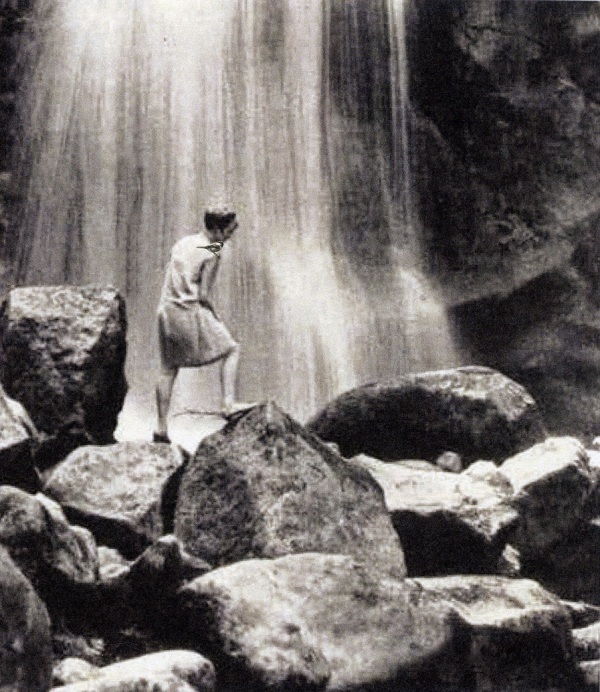
In the 1920s, Fritz Ulbrich, a Berlin watchmaker and amateur photographer set up a photography studio at the back of his shop. Into this room he lured more than 1000 teenage girls and young women, offering them money in exchange for their participation in naked and pornographic photographs. Ulbrich would photograph these women in poses mimicking mythical, lesbian or sadomasochistic scenarios, and in some cases would himself model in the scene. It is likely that he also traded in these photographs. Lieschen Neumann was fifteen years-old when she chanced into 57-year-old Ulbrich’s workshop and spent a year as his model and sexual partner. However, Neumann planned to rob Ulbrich and convinced her 22-year-old unemployed boyfriend, Richard Stolpe, to carry out the job in return for 28 Duetsche Mark. One night in January 1931, Stolpe and his friend Erich Benziger broke into the workshop while Neumann was sleeping beside Ulbrich. The striking of the clocks, presumably at midnight, disturbed the robbery and in a moment of panic, using a bed pillow, they suffocated the watchmaker-photographer. Stolpe was sentenced to death, Benziger to six years imprisonment and Neumann, who was pregnant, to eight years behind bars. The trial attracted a lot of media attention and commentaries and interpretations were offered by the time’s expert sexologists and psychoanalysts. The trilogy does not tell this story in its entirety. In fact, it can be learned only through the accompanying texts.
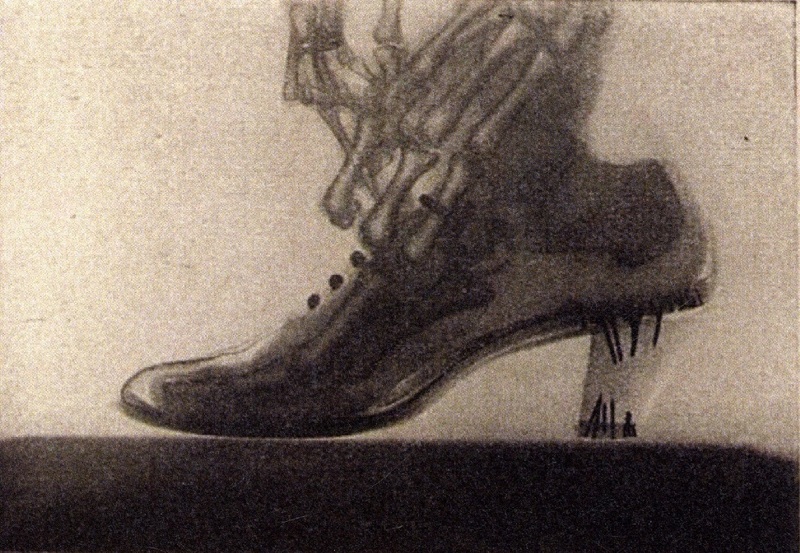
Porat’s photographic installation combines dozens of collages done in the Dadaist-photomontage method developed in Berlin. The images come from many sources such as, the internet, photography books, history books and journals from the Weimar Republic. The archives Porat creates include black and white images of the period. These are processed in different ways. At times with minimal and almost unnoticeable interference, and at times by acts of cutting or joining. Some of the images are copied and brought as they are, in varying sizes. The cuts and additions emphasize what is torn, disconnected and impaired. Porat’s work is characterized by an original merging of her own photographic works with readymade elements. This juxtaposition crosses the personal story with the collective one, as she combines historical periods, familiar images of criminals and victims, and her own photographs, blurring orders and hierarchies. The images are then transformed moving away from the informative source and leading viewers from a concrete world to one of emotions. “In so, collective and personal knowledge and memory (about the role of photography in establishing them) become fragmentary parameters, constantly developing and changing, that influence self-perception, leave their traces on the body and chart the possibilities of its presence and movement in space…”
“Works of art are ‘texts’; signage systems that demand the viewer engage in an interpretational process that oscillates between the affirmation of analogies and their refutation.” All three parts of Porat’s trilogy should be regarded as texts. The link between its parts is thematic, historical (the murder) and formal (the collages of found photographs from the Weimer period, Berlin in black and white). Recurring motifs are recharged anew – naked women in seducing poses, old tools and machines, animals (rabbit, swan, an owl as witness), body parts, prosthesis, gloves and a record player from the watchmaker-photographer series, and more. To these she adds photographs from Hanna Höch’s image album – a versatile, multi-sourced archive, divided into categories such as, plants, dance, sport, or modern woman. It seems that these images are dated up to 1933, and include a photo of a dancing woman, her legs assuming a life of their own, a photo of a stork taking flight, and more. In the three exhibitions, Porat emphasizes the duality of viewpoints – the man and the woman, the perpetrator and the victim, the defense attorney and the prosecutor – and through these she examines formation and mechanisms of control and social policing.
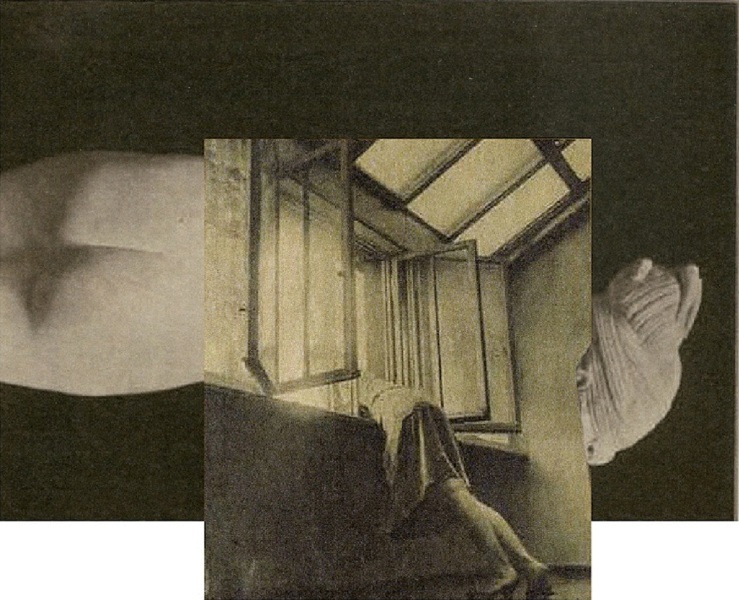
At the center of the gallery stands a device that at first glance resembles the cell of a camera obscura. In it is an object in the shape of a periscope (a device invented in 1877 by the Frenchman Emile Reynaud). The periscope demonstrates the acting principle of animation, known as “persistence of vision”: when an image is perceived, the retina captures the image for the duration of a tenth of a second before processing the next image. When a sequence of still images (animation) are seen at a speed faster than ten seconds per image, the brain is “confused” and produces a false perception of movement. These are the optical principles that form the theoretical foundation of modern animation and film. Porat invites her viewers to enter within, to peek and stay. Inside are three magic lights, yet they are static and the image, instead of merging, dissolves in movement and shape. When entering the device, the viewer becomes part of it, captured in the mirror games of perspective and optical illusions.
The periscope allows viewers to leave the exhibition space and embody a personal moment, and furthermore, gain another angle on the exhibition’s story, especially of the trial. “Thus,” writes Orit Bulgaro, “it establishes tension between the scene, presented in its entirety, and the changing perspectives of the viewer within a given space; between vision, which establishes definite data, and movement, which construes knowledge as relative.” The non-linear arrangement of the works creates new connections on the walls, a psychological puzzle of sorts. The lack of guidance through the story generates a cut-up, fragmentary sense, bringing us face to face with scenes that vacillate between the details of the trail – between the prosecutor and the offender, the judge and the accused, the law and rulership, justice and corruption. Furthermore, the arrangement in space allows Porat to tell her story visually. Robert Storr’s thoughts on exhibition making clarifies the many associations of the exhibition’s title. “The primary means for ‘explaining’ an artist’s work is to let it reveal itself. Showing is telling. Space is the medium in which ideas are visually phrased. Installation is both presentation and commentary, documentation and interpretation. Galleries are paragraphs, the walls and formal subdivisions of the floors are sentences, clusters of works are the clauses, and individual works… operate as nouns, verbs, adjectives, adverbs, and often as more than one of these functions according to their context.”
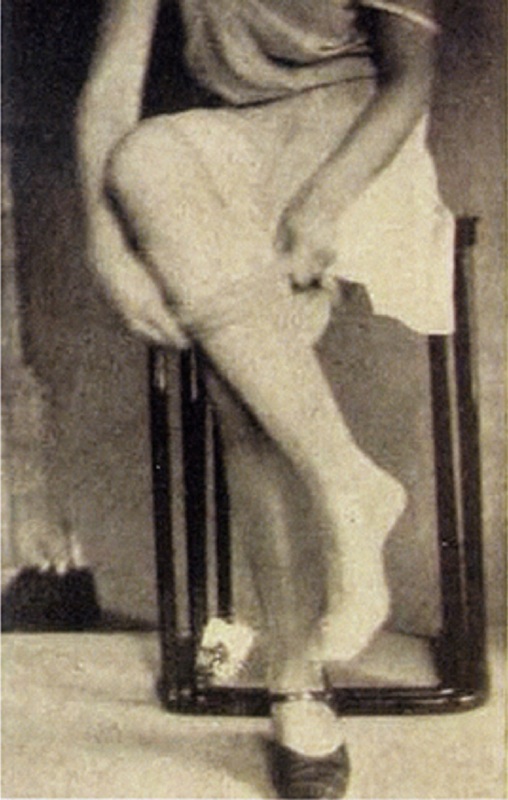
The layout of the walls in the exhibition space and the seemingly associative hanging of the works recalls the panels arranged by art historian Aby Warburg in his monumental Mnemosyne Atlas, named after the Greek goddess of memory. Warburg amassed a visual and thematic archive of more than 1000 images which he arranged on 60 panels, with each panel combining several images of the same subject taken from different visual sources, past and present. The link between the images is created without text or interpretation, only by proximity. The Atlas unites, categorizes and characterizes cultural, historical and artistic images, and creates a visual language that compares different narratives, with images prioritized over text. According to Warburg: “The Atlas, as a reservoir of figurative materials – seeks first to be an inventory of primal forms, which influenced modes of representation of life in movement.” Through the Atlas, Warbug examined terms of movement, bodily gestures, and identification of gestures in textless images. It is a visual-comparative research, with a didactic tendency. Similarly, Porat juxtaposes images and tries to “solve the puzzle.” To decipher something that does not exist in the panel through contemplation and obvious connections. Even though most of the images are found, she manages to create her personal, distinct handwriting, so confirming Warburg’s observation that: “In the realms of mass orgiastic drunkenness – that is where one must seek the forms that give memory an expression of heightened internal excitement, of the kind expressed in body language; forms that strengthen and fix it so deeply that the markings of emotional experience will survive as an inheritance preserved in the memory. These forms return and are embodied in the outline made by the artist’s hand, as if the extreme values of the body language are seeking to come forth in shape by that hand.”
Porat’s work contributes to the broad research into the notion of the archive as a meeting of collective narratives that can be activated and reinterpreted. Tal Yahas comments on the seeping of past into present in Porat’s work, which, through her engagement with different archival materials, tests the durability of the images in both private and collective memory. According to Michel Foucault, the archive is a collection of the material traces left by the culture of a historical epoch. Through examining these traces, a person can deduce the “historical a-priori” and from it, collective unconsciousness structures. In Foucault’s understanding, the archive is a powerful site, an institution meant to create a past in the guise of its recollection: “[The archive] is the general system of the formation and transformation of statements.” Foucault shatters the image of the archive as innocent, neutral and unbiased, and reveals its innate political interests. Porat sees the archive as an institution interested in physical and mental control and considers control a central element in the judicial process of Miss Neumann and her accomplices. The knowledge of the archive in which Porat found the story adheres to the ideologies and powers of those who established the archive and decided on the rules of the game. Relations of dependency and subordination form between the guardians of the knowledge and its administers and its users; like the relation between the young girl and the watchmaker-photographer, and the young girl and the judicial panel.
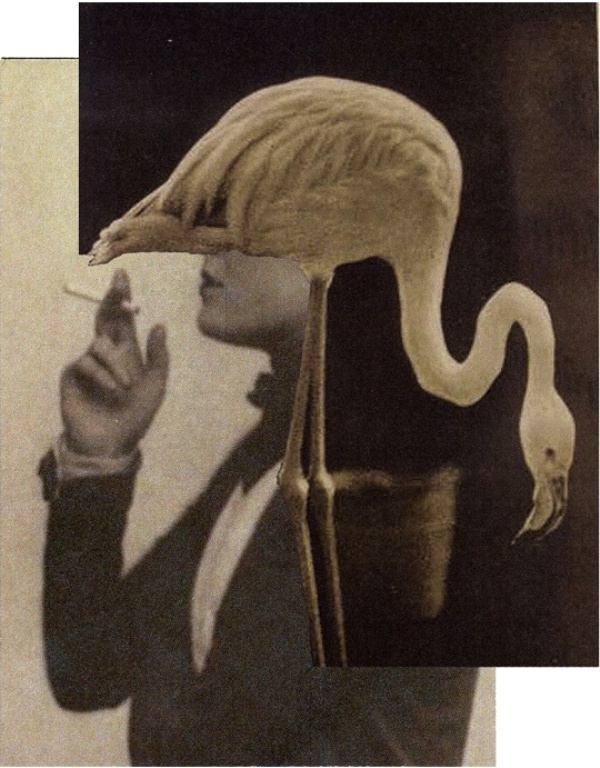
The archive, claims Jacques Derrida, functions according to a double principle of two opposing powers: it is tied to the human compulsion to fix the past, to repeat past patterns and in so to halt life. Yet it is also a prerequisite for the future. “The injunction, even when it summons memory or the safeguard of the archive, turn incontestably toward the future to come. It orders to promise, but it orders repetition, and first of all self-repetition, self-confirmation in a yes, yes. If repetition is thus inscribed at the heart of the future to come, one must also import there, in the same stroke, the death drive, the violence of forgetting, superrpression (suppression and repression), the anarchive, in short, the possibility of putting to death […] the archon of the archive…” Derrida argues that the existence of the archive is essentially affixed to what is yet to come, just as it is involved in our moral responsibility toward the other.
Each visit to the archive entails therefore an act of detection concerning the writing and the “erasing” of memory, the act of searching for clues, the blurring of evidence, the invention of proof – an ongoing wandering after the illusive traces of the past; this is a journey through the shifting sands of language, to the [raw fringes] of the truth. Porat’s work functions like an archive because it forces us to recognize that the past, to which we yearn, is bound to constantly slip out of our grasp; to refuse our desires, and to enhance our anxiety, not to sooth it.
Handwriting in pencil, Porat adds directly onto the wall sentences relating to the murder story or to her private biography. “The way back, through memory, is always archival, and the dictionary-symbolic archive, and those who are sentenced to memory – are sentenced to the word…” These are the sentences and words that tie the images to her life. Porat’s intervention makes the entire issue personal, almost intimate. Information merges with knowledge, history with history, facts are diluted into imagination and fabrication. Viewers attempt to decode the symbolic system she creates, usually with little success.
The sequence of exhibitions invites us to a photographic journey after one story, historically insignificant, followed by a journey after traces of human behavioral patterns, hidden desires, oppressed fantasies, skeletons in the closet, evil inclinations, power games, seduction and violence, all courtesy of the camera. Porat (b. 1975, kibbutz Kfar Giladi) has important questions to ask about the way in which we perceive the world through photography, about the power of the medium and the many possibilities it embodies. Her works are linked to terms of origin, intervention, reproduction and modes of articulation, and the distribution and manipulation of images. They seek to understand how we consume photography, in what way we remember, and how this archive of photographic memory, constantly gathering endless images, operates.
Opening date: Tuesday 27 March 2018
Location: Tel-Aviv Museum of Art
Doron Sebbag – ORS Ltd. Photography Gallery Herta and Paul Amir Building
Curator: Raz Samira |





Field 'text' doesn't have a default value Read more:
|
 |
Элишева Несис.
«Стервозное танго»

|







